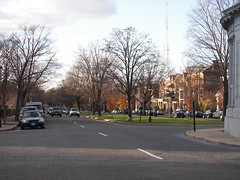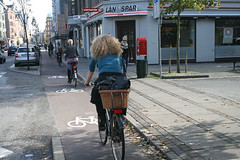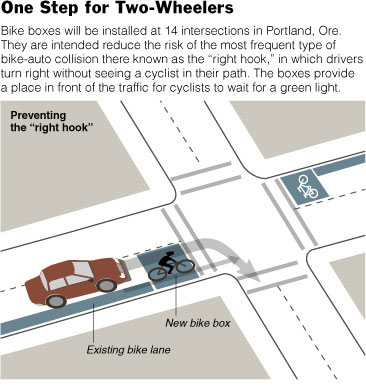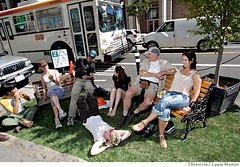Same old, same old
Did you ever read "News of the Weird" when they would have a rolling mention of "stories for which coverage is being 'discontinued' because they occur with altogether too much frequency?
That's how I feel about the "annual" story that seems to run in the Post every year about area pedestrian-driving safety programs. The 2008 version ran today, "Heads Up for Drivers, Pedestrians: 'Street Smart' Program Includes Education, Enforcement," and I hate to say that I didn't even read the article. It's the same thing year after year, in fact after I saw the headline, I thought it would be interesting to go through the Post and find the same article from each of the previous 5 or 6 years and compare and contrast.
-- 4/2008, "A New Push for Pedestrian Safety"
-- MWCOG Street Smart program
Yes, bicyclists and walkers need to pay more attention.
But the problem I see is that drivers have such a sense of entitlement about the roads that it isn't about courtesy. Even if commentators try to turn it around on walkers and bicyclists (such as the radio commentary by Chris Core, covered by Washcycle here, "Chris Core on "The Growing Phenomenon of Bicycle Road Rage"" and "Chris Core's follow up").
And we need some roads rebuilt as demonstration projects to favor walkers and bicyclists, to show another way.
It's time to change the paradigm.

Road Witch project. UK.
It's like an example I give sometimes. If you have a five drawer clothes dresser and you move your underwear from the 2nd drawer to the top drawer, and your socks from the top drawer to the 2nd drawer, have you really changed anything?
• Let's rebuild 7th Street SE by Eastern Market with belgian block (Oh no we can't because that means that the roadbed would have to be reconstructed) and around Lincoln Park--take out the speed bumps and tables and put in Belgian block.

Belgian block paved road, Monument Avenue, Richmond.
• Let's set up bicycling and walking programs at the schools.
• Let's set up bicycling stations in the key commercial districts (parking, showers, etc.) at the least Downtown (could do it at the YWCA), Georgetown and the Golden Triangle (could do it at the YMCA), and Silver Spring.
• Let's put in a cycle track in a highly visible location, where it will be used. Why not do this as a memorial to Alice Swanson and the other bicyclists, who have been killed in bicycle-automobile accidents?

Bicycle track, Copenhagen. Photo from Streetsblog.
• Some painted bicycle boxes?

New York Times graphic.
• having WMATA (the public transit authority for the region) appoint a bicycling and pedestrian enhancement coordinator to point out areas where WMATA can better facilitate walking and bicycling as part of trip behavior?
The annual campaign by the MWCOG is just moving the socks around, when the automobility paradigm reigns unchanged.
This report from the UK, Living Spaces: Cleaner, Safer, Greener, had a lot of influence on my thinking about these issues when I first read it maybe 4-5 years ago.

2006. The group Rebar declared Sept. 21 "Park(ing) Day" and installed this temporary park in a parking space on Mission St. in downtown San Francisco, CA. The group moved the park to several different parking spaces throughout the day. Port-a-park: A temporary park was set up in a parking space on Mission Street by Rebar, an art collective. The park was moved several times that day. Chronicle photo by Laura Morton
Labels: bicycling, car culture and automobility, mobility, urban design/placemaking, walking



0 Comments:
Post a Comment
<< Home